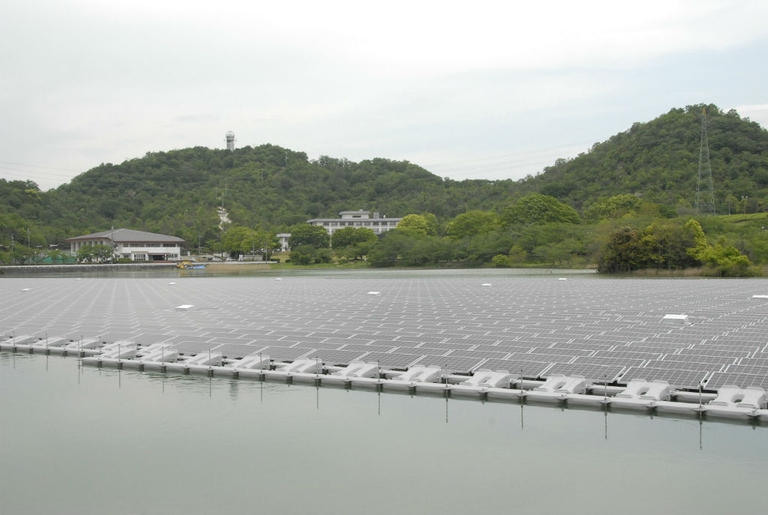
A group of experts in Tokyo suggested pouring radioactive water from Fukushima into the open sea. A marine biochemist explains the consequences of this absurd decision.
Due to the lack of soil for the construction of PV plants, the Japanese company Kyocera has thought to build one on a water reservoir. This is the result.
50,000 photovoltaic panels installed over a water surface of 180,000 square metres. These are the dimensions of what will be – once completed – world’s largest floating solar plant. The plant, that is being realised by the Japanese company Kyocera in the Prefecture of Chiba will generate 13.7 MW of power and provide about 5,000 households with clean electricity.
After the 2011 Fukushima nuclear disaster, the Japanese Government decided to invest in renewables – which are certainly safer than nuclear power – also in view of the increasing request of the Japanese citizens.
This is not the first project of this kind. A smaller plant similar to the one that is being constructed by Kyocera is already operational in the city of Okegawa, in the Prefecture of Saitama. The company itself explains why these solar plants are being build: “With the decrease in tracts of land suitable for utility-scale solar power plants in Japan due to the rapid implementation of solar power Kyocera TCL Solar has been developing floating solar power plants since 2014”.
Kyocera is famous for finding space where seemingly there is no space, not only on water reservoirs. Indeed it recently developed projects for two PV plants on abandoned golf courses. The two plants will generate more than 125,000 MW yearly and provide energy to almost 40,000 households.
The growth of Japan’s solar market is confirmed by a recent report by Bloomberg New Energy Finance, according to which solar installations are expected to peak this year: between 13.2 GW to 14.3 GW of panels are going to be added. This result was made possible thanks to a programme aimed to incentivise the installation of solar plants in the country. However, the report says that the annual installed capacity will gradually decrease in 2017 due to challenges in grid connection and land acquisition.
Siamo anche su WhatsApp. Segui il canale ufficiale LifeGate per restare aggiornata, aggiornato sulle ultime notizie e sulle nostre attività.
![]()
Quest'opera è distribuita con Licenza Creative Commons Attribuzione - Non commerciale - Non opere derivate 4.0 Internazionale.
A group of experts in Tokyo suggested pouring radioactive water from Fukushima into the open sea. A marine biochemist explains the consequences of this absurd decision.
A federal court in Washington, D.C. has struck down the Dakota Access Pipeline, following years of campaigning by the Standing Rock Sioux tribe.
The Scottish island of Eigg is self-sufficient for its energy needs, relying almost entirely on renewable sources, especially thanks to a coordinated community effort.
President Magufuli in unmovable in going ahead with the Stiegler’s Gorge dam despite conservationists’ warnings of the damage it will cause the Selous Game Reserve’s ecosystem and wildlife.
A large dam along the Luangwa River in Zambia would have posed a serious risk to local people and wildlife, leading hundreds of thousands to oppose it. A call to which the government responded by halting plans to build it.
The first one megawatt solar power plant in the Chernobyl exclusion zone has become operational. This is the first step in a renewable energy development project promoted by the Ukrainian government in the area.
A tanker exploded at a gas and petrol station in Nigeria’s Nasarawa state on the 10th of September, killing 35 people and leaving some burned beyond recognition; 3 citizens had several spine and brain injuries, 2 of them are still on Intesive Care Units. Fela Habila , a local singer, is now stable and out of danger but
The largest tidal power plant in the world will be built in the Larantuka Straits. It will serve 100,000 people and help overcome some of the challenges of energy provision in Indonesia.
Robben Island’s solar energy micro-grid project will produce almost one million kilowatt hours of electricity annually, significantly reducing the cost and impact of buying diesel.









